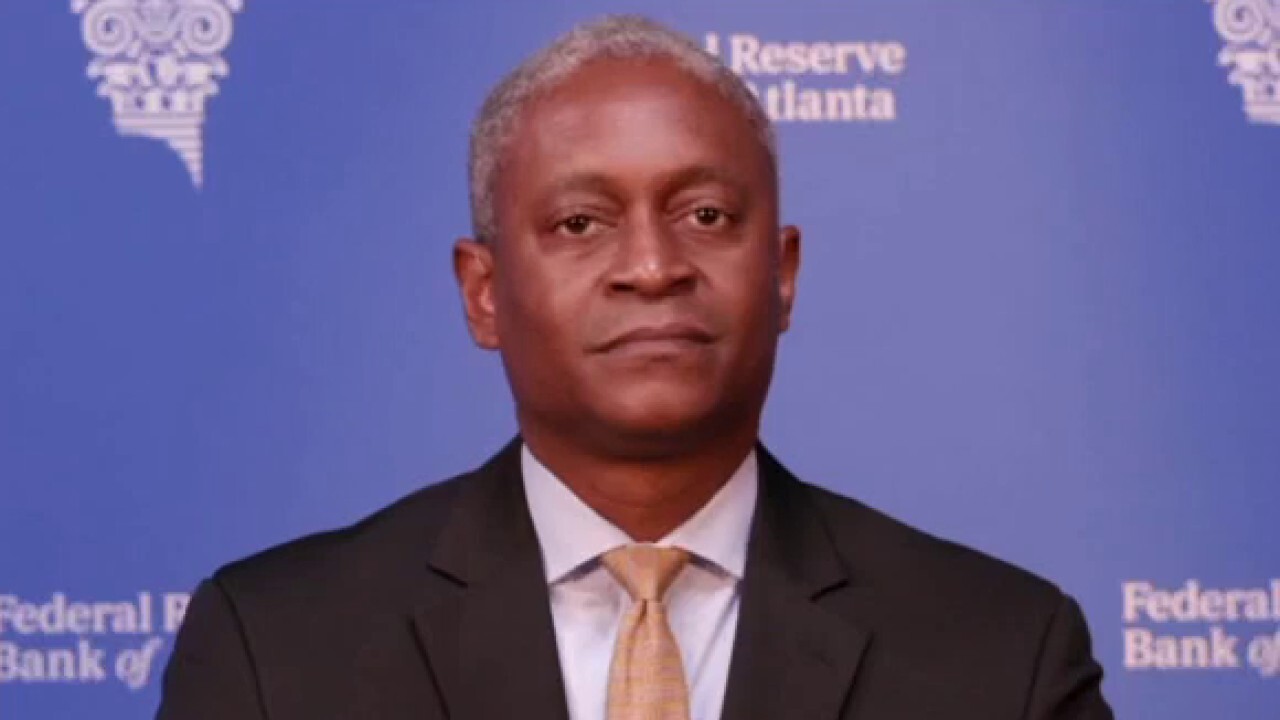Fed’s Bostic weighs Omicron variant and two rate hikes
Bostic hints the Fed may raise rates two times in 2022 to handle inflation
Atlanta Fed president: Two rate hikes possible in 2022
Federal Reserve Bank of Atlanta president Raphael Bostic addresses inflation and new COVID concerns on 'Your World.'
As a new COVID-19 variant hits pockets of the globe, Federal Reserve President Rapheal Bostic, gave his assessment on how it may impact the economy.
In an interview with FOX, the Atlanta Fed President said, "With each successive variant that's been introduced, the economy has slowed down, but the amount of slowdown has been less." If the Omicron variant, he adds, follows a similar trajectory as the Delta variant, we will see slowing, but not as great as during the Delta variant surge.
DOW POSTS BIGGEST DROP OF 2021 ON VARIANT FEARS
Bostic is a voting member of the Federal Open Market Committee next year. That is the committee that sets monetary policy. He says the Fed could potentially raise rates two times in 2022 to handle inflation. The latest Consumer Price Inflation data shows prices surged by 6.2% over the past 12 months, the highest increase in 31 years.
INFLATION AT RISK OF 1980S SPIKE: TRUMP ADVISOR
Raphael Bostic, president and chief executive officer of the Federal Reserve Bank of Atlanta, speaks to members of the Harvard Business School Club of Atlanta at the Buckhead Club in Atlanta, Georgia, U.S., on Wednesday, Feb. 19, 2020. Bostic said he (Getty Images)
Bostic adds, "if the economy continues to run hotter than we expected in terms of inflation being elevated, then a second one might become necessary, and our move might need to happen more quickly" he explained.
Bostic noted policymakers will follow the data when it comes to any move in rates and says the markets may need to prepare for a nimble timetable on tapering.
"For me, the early second quarter late first quarter of 2022 are all in play as reasonable alternatives for when we might stop our purchases," Bostic explained because this allows the Fed to have options if inflation rises significantly from this point.
JOBS REPORT, YELLEN-POWELL ON CAPITOL HILL TOP WEEK AHEAD
Bostic went on to say that COVID is driving inflation through supply chain disruptions and pent-up demand. He has heard from companies in his district and they do not see inflation coming down until well into 2022. "They say, well, it looks more like the middle of 2020 to maybe even to the third or the fourth quarter. They're just not sure."
Bostic believes that the fourth-quarter GDP growth will come in stronger than the third quarter which came in at 2.1% for the second estimate, as reported last week.
As for holiday sales, Bostic is monitoring as we move into year-end.

